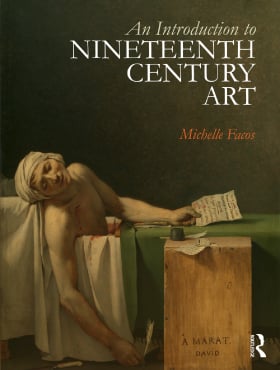Loge at the Théâtre des Italiens
Documentation:
The activity depicted in this painting had a NAME in mid 19th-century France, "lorgner," meaning to look through a lorgnette (opera glasses) to observe other theater-goers. It first occurred in a poem of Alfred de Musset, "Une Soiree perdue" ("A Lost Evening"), pubished in the August 1840 issue of Revue des deux mondes:
"Enfoncé que j'étais dans cette rêverie
Ca et là, toutefois, lorgnant la galerie…"
(“Absorbed as I was in this daydream,
Surveying, in any even, the audience here and there…”)
Feminist Marie Deraismes (1828-94) felt the Gonzalès presented a poorly matched couple in Loge at the Théâtre des Italiens :
“Two figures, natural size, stand out clearly against a dark background. This couple must be legally united to judge by the reciprocal indifference of the two spouses; from the beginning, you see that each of these individuals is living for their own private reasons. For sure, the author has taken a page from one of her father’s [Emmanuel Gonzalès] novels and translated it with the brush. The young woman has a graceful and natural pose. With one of her arms braced on the edge of the loge, her gloved hand is holding an ivory lorgnette that stands out vividly against the crimson velvet of the balustrade. Her head is delicate, although not completely finished since the model missed her last sittings – you can see that, for this young woman, the singing and the harmonies of the orchestra are mere accompaniment for the internal melody that resonates within. She is following her dream through the words and music. Her bosom is the high point of the work – it is generously and outstandingly painted: the artist has rendered it directly in rich impasto. Here is the suppleness and the firmness of flesh in the glow of youth. Her breasts, revealed in a square décolleté and held by shoulder straps that are more slender than garters, discloses the elegant shoulders leading to her arms. The blue dress, of a vaporous material, is quite skillfully rendered….As for the dashing gentleman 9cavalier0, what a successful-looking type! It’s definitely that fop (bellatre) who haunts the best boxes in his irreproachable outfit, with the custom-fitted vest, leaning slightly backward in order to better display his torso. How well we know this type for his elegant nullity! His head is handsome, but cold and fatuous. The person carrying it is less concerned with seeing than with being seen. Nothing is more accurate than the general tonality of this figure. The shirt front, which plays such an important role in today’s male fashions, is right in tone and has a witty touch.
Cited in Albert Boime, “Maria Deraismes and Eva Gonzalès: A Feminist Critique of Une Loge aux Théâtre des Italiens,” Woman’s Art Journal, vol. 15, no. 2 (Autumn 1994-Winter 1995): 34.
Similar Subjects by Other Artists:
Pierre-Auguste Renoir, La Loge, 1874 (Courtauld Institute, London)
Mary Cassatt, The Loge, 1882 (National Gallery of Art, Washington, DC)
Hans Speckter, In the Gallery of the Hamburg Stadttheater, 1880 (Kunsthalle, Hamburg)
Honoré Daumier, Loge at the Theater, 1865 (Kunsthalle, Hamburg)
About the Artist
Died: Paris, 5 May 1883
Nationality: Spanish-French

 Buy the Book
Buy the Book